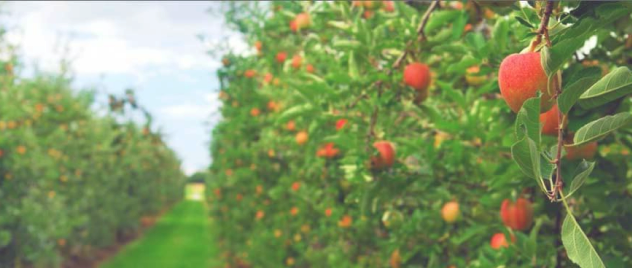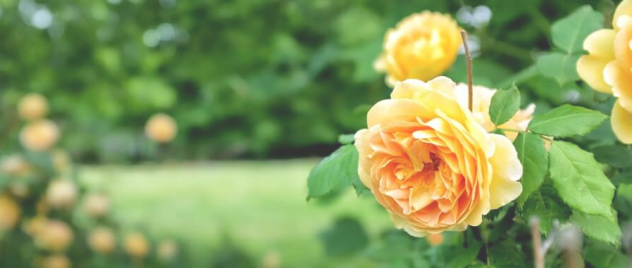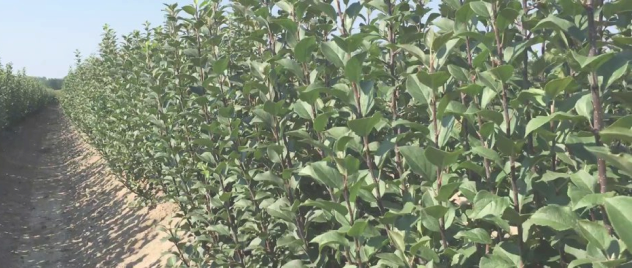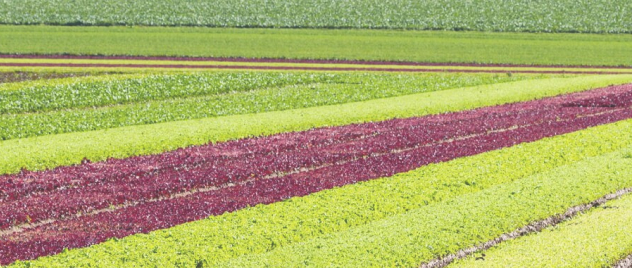NECTARINES
Nectarine (Prunus persica var. Nectarine L.) is a subspecies of the peach with the main difference of a smooth surface. Nectarines have great characteristics keeping freshness for longer, they are easily stored and have a longer life. Nectarines have a significant quantity of vitamins A and C, niacin, and fibers which have a beneficial effect on the health of the skin and nervous system. Nectarines are an excellent source of carotene, potassium, flavonoids, natural sugars, lycopene, and lutein particularly useful in maintaining good health. Very suitable for fresh consumption and this makes it a very interesting fruit tree for commercial cultivation.
NECTARINE
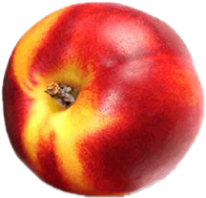
ROOTSTOCKS
PRUNUS PERSICA
One of the most widely used rootstocks for peaches. This rootstock shows great compatibility with various peach and nectarine varieties. The crown of the tree is mechanically stable even under more prolific crops. The root system is wide, strong, and well-developed. Works well with loose and sandy soils, and doesn’t tolerate impermeable soils.
TRAINING SYSTEMS
PALMETTE
This system has a crown with 3 to 4 tiers consisting of primary branches. The tree should have a leader that is strong, healthy, and wider than the primary branches of the first tier. First-level branches are the longest and most developed ones in the crown since they carry more than 50% of the crops. The primary branches of the second tier are shorter than the previous ones and should carry 25-30% of the crops. The primary branches of the third tier are the shortest ones. This way the yield stability is maximized. The strongest and longest secondary branches are positioned at the base of the primary branches, while their length declines further to the top of the tree. The same rule is applied to the tertiary branches. A palmette tree formed this way has the shape of a flattened pyramid when observed from the side. Of all the palmette training systems used in peach cultivating today, the best results are achieved with the free and premature palmette. The free palmette is developed in the first two years, almost without any pruning. Pruning is performed at the end of the third or before the fourth vegetation cycle and the levels are formed without strictly specified spaces or angles. In order to form a premature palmette, first-tier forming is necessary.
SLENDER SPINDLE
The slender spindle is a spindle system of smaller dimensions which allows for narrower tree spacing (1.0-1.5 m) and denser planting, as well as faster forming of yielding surface and earlier bearing, and also higher crops per surface area unit later on. Crops of 1-5 kg can be achieved starting from the second year already. This system is suitable for intense peach production. The forming of this training system requires seedlings with premature, well-developed shoots.
Two to four premature shoots are left along with the leader in a more or less spiral manner, 40 cm from the ground, with a spacing of 15-30 cm. In order for this system to develop properly, green pruning is required along with pinching, at least once a month in May and June.
Winter pruning is carried out at the beginning of the second and third year after planting, before flowering. Sufficient amounts of shoots are left in the lower parts of the crown. The overlapping and shaded branches are removed during green pruning since only the shoots that get enough sunshine are able to develop a sufficient amount of flower buds. Green pruning is applied to vigorous varieties since this technique can be avoided for low vigour varieties.
See our full SELECTION of NECTARINE TREES we have in our offer
CALDESI
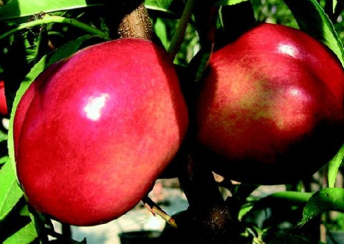
TREE:
A moderate-vigorous variety with an upright, quick growing habit, and high productivity.
POLLINATORS:
Self-fertile.
FRUIT APPEARANCE:
Elongated and asymmetrical shape of the fruit. Shiny skin that is mostly covered in bright red on a yellow-green color base. The flesh is white, juicy, firm, and crispy.
FRUIT SIZE: Medium to large fruit.
HARVEST:
Mid to end of July, and the beginning of August.
COMMERCIAL USE:
Savoury and aromatic. Consumed fresh, dried, or used in drinks and desserts, it also tolerates processing. A variety that handles transport well.
FANTASIA
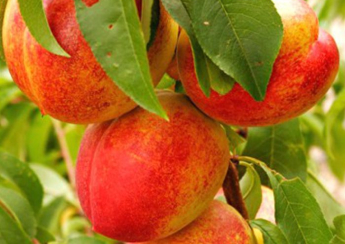
TREE:
Vigorous growth. Crown has a pyramidal growing habit, with a moderate growth rate. Flowering is early and abundant. Quick bearer with regular and great yields. Easy to grow, grows best when positioned in full sun, recommended doing adequate thinning.
POLLINATORS:
Self-pollinating.
FRUIT APPEARANCE:
Slightly elongated, egg-shape. Light yellow base color with orange to fiery red skin overlay covering 50% to 70% of the surface. The flesh is yellow-orange, red around the pip, firm, and juicy. Mildly aromatic, and good taste.
FRUIT SIZE: Medium to large.
HARVEST:
Late midseason, mid-August. Fantasia can be harvested in two stages depending on the desired qualities of the fruit, regarding firmness and taste.
COMMERCIAL USE:
The market uses it as a dessert nectarine, but it is also used in the processing industry. Good for handling, and is transported very well.
MORSIANI
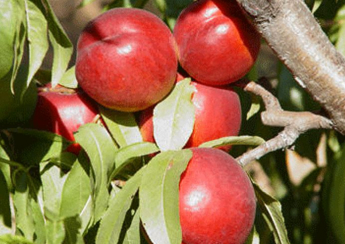
TREE:
A variety that thrives best in temperate and warm climates, ideally in full sun. Gives regular, abundant yields.
POLLINATORS:
Self-fertile
FRUIT APPEARANCE:
Round and slightly asymmetrical fruits with rich red-colored skin on most of the surface. It has yellow, firm flesh.
FRUIT SIZE: Large.
HARVEST:
Long harvest period, mid-August to mid-September.
COMMERCIAL USE:
Considered as a high-quality nectarine on the market. Used on the market as fresh, and also used in the processing industry.
NECTARED
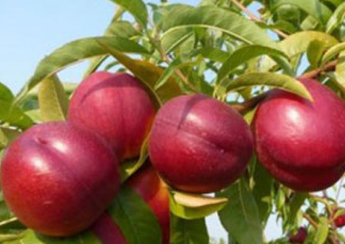
TREE:
The Nectared nectarine tree is a medium-sized tree with a spreading growth habit. It forms a well-shaped canopy with moderate vigor. It blooms typically in late March or early April, depending on the climate.
POLLINATORS:
Nectared nectarines are self-fertile and do not require a specific pollinator. However, having other nectarine or peach varieties nearby can improve fruit set and yield..
FRUIT APPEARANCE:
Nectared nectarines have a smooth and velvety skin with a vibrant orange-yellow color. The skin is often blushed with shades of red on the side exposed to the sun. The fruit is medium to large in size with a round shape and a slight indentation at the stem end. The flesh of Nectared nectarines is juicy and succulent, boasting a rich, sweet flavor with a delicate balance of acidity. The flesh is golden-yellow in color, smooth in texture, and offers a delightful eating experience.
FRUIT SIZE:
Nectared nectarines are typically medium to large in size, depending on growing conditions.
HARVEST:
Nectared nectarines are usually ready for harvest in the summer, typically end of August to beginning of September, depending on the region and climate.
COMMERCIAL USE:
Nectared nectarines are highly regarded for their exceptional flavor and juicy texture. They are popular for fresh consumption, as their sweet and tangy taste delights the palate. These nectarines are also great for various culinary applications, including salads, desserts, jams, and preserves. Their attractive appearance and delectable flavor make them a sought-after choice in the market.
RED TOP
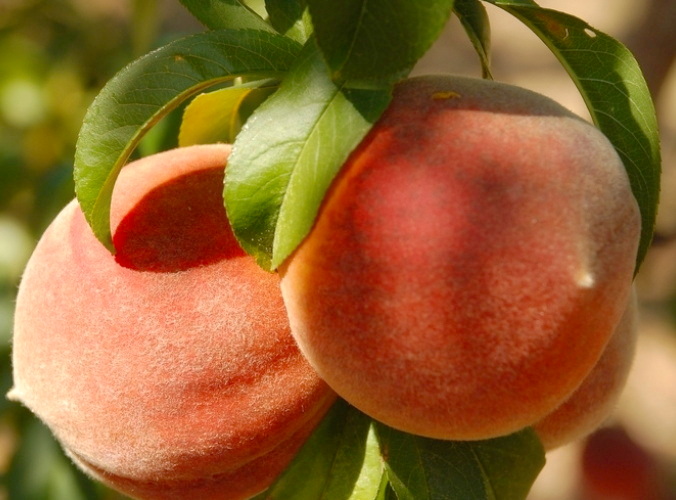
TREE:
The Red Top nectarine tree is a medium-sized tree with a spreading growth habit. It forms a well-shaped canopy with moderate vigor. It blooms in the spring, typically in late March or early April, depending on the climate.
POLLINATORS:
Self-fertile and do not require a specific pollinator. Having other nectarine or peach varieties nearby can improve fruit set and yield.
FRUIT APPEARANCE:
Red Top nectarines feature a smooth and velvety skin with a vibrant red color. The skin is rich and glossy, captivating the eye with its deep hues. The fruit is medium to large in size with a round shape and a slight indentation at the stem end. The flesh of Red Top nectarines is juicy and succulent, offering a delightful combination of sweetness and tanginess. The flesh is yellow in color, smooth in texture, and provides a refreshing and satisfying eating experience.
FRUIT SIZE:
Red Top nectarines are typically medium to large in size, depending on growing conditions. They have a substantial presence and a satisfying weight when mature.
HARVEST:
Red Top nectarines are usually ready for harvest end of July to early August, depending on the region and climate. The fruit should be picked when it reaches optimal ripeness, characterized by a firm yet slightly yielding texture and a full, aromatic fragrance.
COMMERCIAL USE:
Red Top nectarines are highly valued for their exceptional flavor and attractive appearance. They are widely enjoyed for fresh consumption, as their sweet and tangy taste is a true delight. These nectarines are also perfect for processing industry, such as salads, desserts, and jams. They handle the transport very well.
AMIGA
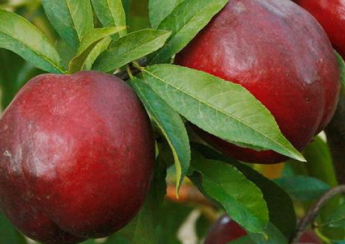
TREE:
The Amiga nectarine tree is a medium-sized tree with a spreading growth habit. It forms a well-shaped canopy with moderate vigor. It blooms in late March or early April.
POLLINATORS:
Amiga nectarines are self-fertile and do not require a specific pollinator. However, having other nectarine or peach varieties nearby can improve fruit set and yield.
FRUIT APPEARANCE:
Amiga nectarines have a smooth and velvety skin with a vibrant orange-red color. The skin is often blushed with shades of red and yellow, creating an attractive and eye-catching appearance. The fruit is medium to large in size with a round shape and a slight indentation at the stem end. The flesh of Amiga nectarines is juicy, tender, and succulent. It has a sweet and aromatic flavor with a delightful balance of acidity. The flesh is golden-yellow in color, smooth in texture, and offers a satisfying eating experience.
FRUIT SIZE:
Amiga nectarines are typically medium to large in size, depending on growing conditions. They have a substantial presence and a pleasing weight when mature.
HARVEST:
Amiga nectarines are usually ready for harvest in the summer, typically from the end of July to mid-August, depending on the region and climate. It is important to pick the fruit at its peak of ripeness when the skin is firm but slightly yielding, and the flesh is juicy and flavorful.
COMMERCIAL USE:
Amiga nectarines are highly regarded for their exceptional flavor and attractive appearance. They are popular for fresh consumption, as their sweet and tangy taste is truly enjoyable. They are highly transportable. Their vibrant color, juicy texture, and excellent flavor make them a sought-after choice for both home cooks and the processing industry.

